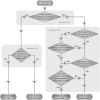The evolutionary origins of pesticide resistance
- PMID: 29971903
- PMCID: PMC6378405
- DOI: 10.1111/brv.12440
The evolutionary origins of pesticide resistance
Abstract
Durable crop protection is an essential component of current and future food security. However, the effectiveness of pesticides is threatened by the evolution of resistant pathogens, weeds and insect pests. Pesticides are mostly novel synthetic compounds, and yet target species are often able to evolve resistance soon after a new compound is introduced. Therefore, pesticide resistance provides an interesting case of rapid evolution under strong selective pressures, which can be used to address fundamental questions concerning the evolutionary origins of adaptations to novel conditions. We ask: (i) whether this adaptive potential originates mainly from de novo mutations or from standing variation; (ii) which pre-existing traits could form the basis of resistance adaptations; and (iii) whether recurrence of resistance mechanisms among species results from interbreeding and horizontal gene transfer or from independent parallel evolution. We compare and contrast the three major pesticide groups: insecticides, herbicides and fungicides. Whilst resistance to these three agrochemical classes is to some extent united by the common evolutionary forces at play, there are also important differences. Fungicide resistance appears to evolve, in most cases, by de novo point mutations in the target-site encoding genes; herbicide resistance often evolves through selection of polygenic metabolic resistance from standing variation; and insecticide resistance evolves through a combination of standing variation and de novo mutations in the target site or major metabolic resistance genes. This has practical implications for resistance risk assessment and management, and lessons learnt from pesticide resistance should be applied in the deployment of novel, non-chemical pest-control methods.
Keywords: adaptive introgression; de novo mutation; evolution; fungicide; herbicide; insecticide; pesticide resistance; pleiotropic co-option; selective sweeps; standing variation.
© 2018 The Authors. Biological Reviews published by John Wiley & Sons Ltd on behalf of Cambridge Philosophical Society.
Figures



Similar articles
-
Genome Resequencing Reveals Rapid, Repeated Evolution in the Colorado Potato Beetle.Mol Biol Evol. 2022 Feb 3;39(2):msac016. doi: 10.1093/molbev/msac016. Mol Biol Evol. 2022. PMID: 35044459 Free PMC article.
-
Pesticide resistance in arthropods: Ecology matters too.Ecol Lett. 2022 Aug;25(8):1746-1759. doi: 10.1111/ele.14030. Epub 2022 Jun 21. Ecol Lett. 2022. PMID: 35726578 Free PMC article.
-
Herbicide resistance management strategies: how do they compare with those for insecticides, fungicides and antibiotics?Pest Manag Sci. 2021 Jul;77(7):3049-3056. doi: 10.1002/ps.6395. Epub 2021 Apr 21. Pest Manag Sci. 2021. PMID: 33821561
-
Evolving understanding of the evolution of herbicide resistance.Pest Manag Sci. 2009 Nov;65(11):1164-73. doi: 10.1002/ps.1842. Pest Manag Sci. 2009. PMID: 19743401 Review.
-
Pest toxicology: the primary mechanisms of pesticide action.Chem Res Toxicol. 2009 Apr;22(4):609-19. doi: 10.1021/tx8004949. Chem Res Toxicol. 2009. PMID: 19284791 Review.
Cited by
-
Exploring the Global Trends of Bacillus, Trichoderma and Entomopathogenic Fungi for Pathogen and Pest Control in Chili Cultivation.Saudi J Biol Sci. 2024 Aug;31(8):104046. doi: 10.1016/j.sjbs.2024.104046. Epub 2024 Jun 12. Saudi J Biol Sci. 2024. PMID: 38983130 Free PMC article. Review.
-
The Prospect of Hydrolytic Enzymes from Bacillus Species in the Biological Control of Pests and Diseases in Forest and Fruit Tree Production.Int J Mol Sci. 2023 Nov 29;24(23):16889. doi: 10.3390/ijms242316889. Int J Mol Sci. 2023. PMID: 38069212 Free PMC article. Review.
-
Baseline Susceptibility and Cross-Resistance of HearNPV in Helicoverpa armigera (Lepidoptera: Noctuidae) in Brazil.Insects. 2022 Sep 9;13(9):820. doi: 10.3390/insects13090820. Insects. 2022. PMID: 36135521 Free PMC article.
-
Transposon-mediated insertional mutagenesis unmasks recessive insecticide resistance in the aphid Myzus persicae.Proc Natl Acad Sci U S A. 2021 Jun 8;118(23):e2100559118. doi: 10.1073/pnas.2100559118. Proc Natl Acad Sci U S A. 2021. PMID: 34074777 Free PMC article.
-
A major 6 Mb superlocus is involved in pyrethroid resistance in the common bed bug Cimex lectularius.Evol Appl. 2023 Apr 25;16(5):1012-1028. doi: 10.1111/eva.13550. eCollection 2023 May. Evol Appl. 2023. PMID: 37216030 Free PMC article.
References
-
- Barrett, R. D. H. & Schluter, D. (2008). Adaptation from standing genetic variation. Trends in Ecology & Evolution 23, 38–44. - PubMed
-
- Bass, C. , Denholm, I. , Williamson, M. S. & Nauen, R. (2015). The global status of insect resistance to neonicotinoid insecticides. Pesticide Biochemistry and Physiology 121, 78–87. - PubMed
-
- Bass, C. , Zimmer, C. T. , Riveron, J. M. , Wilding, C. S. , Wondji, C. S. , Kaussmann, M. , Field, L. M. , Williamson, M. S. & Nauen, R. (2013). Gene amplification and microsatellite polymorphism underlie a recent insect host shift. Proceedings of the National Academy of Sciences of the United States of America 110, 19460–19465. - PMC - PubMed
Grants and funding
LinkOut - more resources
Full Text Sources
Other Literature Sources

